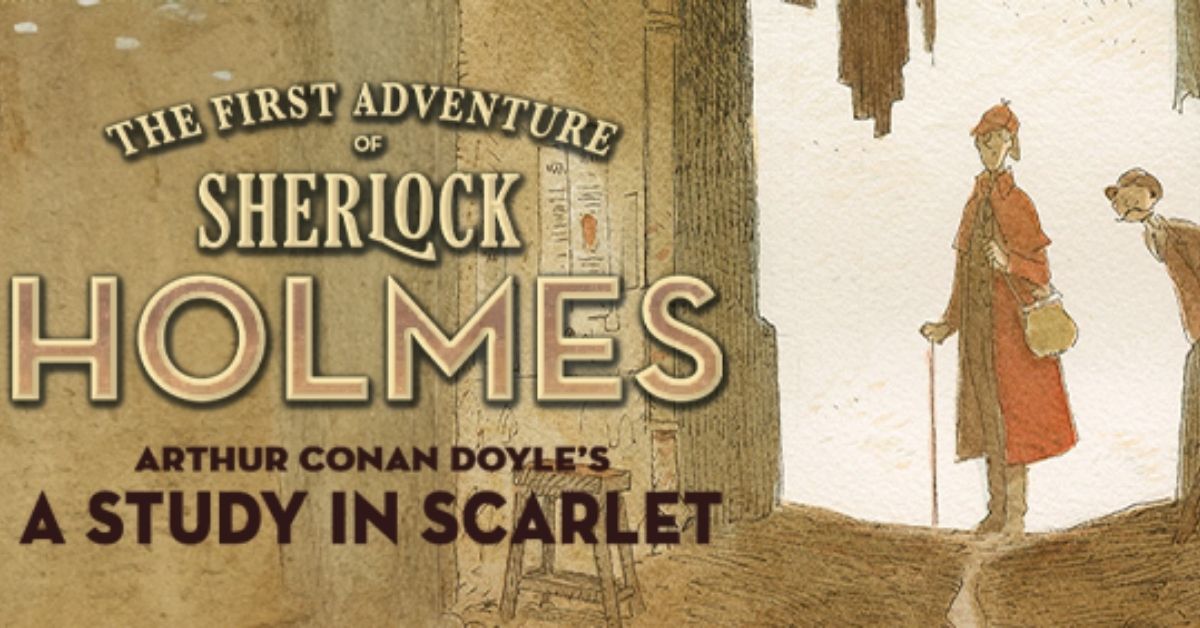Crime and detective mysteries are one of the most widely consumed genres in media today. Reading or watching shows about investigators cracking a case and even putting themselves in perilous circumstances to deliver justice has captivated audiences for centuries. I decided to take a deeper dive into one of the progenitors of the genre.
Arthur Conan Doyle is a true legend of literature. The characters he is known for creating even more so. Sherlock Holmes is not only a staple of British literature, but literature the world over. He is the detective all others are compared to, and his first outing fulfills those expectations completely.
“A Study in Scarlet” is the first ever outing of Sherlock Holmes and his constantly clueless companion Watson. This marks the beginning of the story for the two amateur detectives, even featuring the pairs meeting to rent the now iconic 221b Baker Street apartment.
This murder mystery is a great start to the series with many twists and turns. Each step both answers questions and keeps the reader guessing at the same time. However, this book certainly shows its age at times and that might keep certain readers from fully enjoying this work of mystery and literature history.

Holmes does have a place in pop culture but like many other cases this representation does not do the most accurate job of representing the version that is presented in the original story. Holmes is far from the suave and put together genus of his pop culture representation.
Rather he is an erratic and unpredictable person who only comes together when he’s on a case (and when he is condescending to the police detectives of Scotland Yard). This makes every scene he is in something one needs to pay attention for because you never quite know what he is going to do, including randomly arresting the killer in his own sitting room in the middle of a conversation.

Another change to the expected formula is that Holmes was not the character through which we experience the story, Watson is. This is a great decision because Watson grounds the story. Far from the neurotic hyper-genius of Holmes, Watson is a humble working-class man who only came to London because he was nursing his wounds from Afghanistan, where he was a battlefield surgeon.
This makes Watson a much more suitable character to serve as a point of view because he is a infinitely more approachable person than Holmes. The entire story is framed (for the most part) as if the reader were a friend of Watson’s and he is writing to them to tell them of the strange yet intriguing experience he had during his time in London.
The story also shows its age however. This is not in the usual way that old cartoons do where looking back, they end up being less than politically correct. Although there are some more unsavory phrasings in the latter half of the book. Rather the issue is with the core of the text itself.
Sherlock Holmes was written over 100 years ago by a man from a different country, with the story also being set in that country. This means that the grammar, word choice and especially the bits of slang and phrases make it quite difficult to parse.
A reader might even want to keep a search engine ready to keep up with what the characters are saying. This also means that reader who are not interested in reading just under 150 pages of dense Victorian English might want to pass this choice up.
For any that are willing to put up with the language barrier this is an amazing choice of book to enjoy. Not only is it a great read all the way through, it’s a piece of literary history.
Andrew Barnes, staff writer
Check out more post from The Clarion:
- Newsweek names Sinclair 1 of America’s Top Online Colleges for 2026
- Myths and memories: How Thanksgiving evolved alongside America
- Think you know Thanksgiving? Test your knowledge here
- Is mental health the new teenage crisis?
- Top 7 universities to transfer to from Sinclair College

